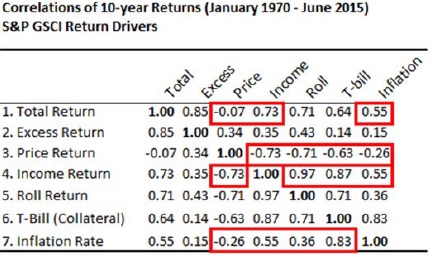Do Mutual Fund Managers Have Stock-Picking Skill in Lottery Stocks?
Are portfolio managers skilled in stock-picking? It is a popular subject for academic research and majority of papers show that active funds underperform their respective benchmarks. But… It doesn't mean professionals do not know how to pick stocks. It can simply mean that a lot of managers are too afraid (or are limited by risk or fund size) to increase their funds' active share. Seems like there is a subset of stocks where fund managers picks tend to outperform the rest of the market – the lottery stocks – low price, high idiosyncratic risk and skewness stocks :
Authors: Stein
Title: Are Mutual Fund Managers Good Gamblers?
Link: https://papers.ssrn.com/sol3/papers.cfm?abstract_id=2919410
Abstract:
I investigate the skill of mutual fund managers by focusing in their holdings of a special type of stock. Kumar (2009) classifies low price, high idiosyncratic risk and skewness stocks as ‘Lottery Stocks’, and shows that these securities severely under-perform. I look at the effect that these investments have on the performance of U.S. equity mutual funds, and how they reflect on the skill of the manager. As part of this analysis I introduce the ‘Lottery Score’, the percentage of equity assets invested in Lottery Stocks. I find that the Lottery Stocks that fund managers pick tend to outperform the rest of the market, and the funds themselves persistently outperform similar funds that don’t invest in these stocks. An investable strategy that buys Lottery Stocks held by the funds and sells those ignored by them attains a monthly alpha of 2%. The Lottery Score is shown to be a good predictor of fund performance, even after controlling for a number of previously introduced measures of skill. Since the funds’ out-performance cannot be fully explained by their allocation to Lottery Stocks, this behavior uncovers a more general ability for asset management.
Notable quotations from the academic research paper:
"Following the literature that analyses which securities fund managers hold and which they avoid, I focus in a particular type of stock labeled by Kumar (2009) ‘Lottery Stocks’. Compared to the median of all stocks that trade in the U.S. equity market, Lottery Stocks have a lower price, higher idiosyncratic volatility and idiosyncratic skewness. Kumar describes Lottery Stocks as ‘long shots’ which are similar to lottery tickets, in that they offer a risky investment opportunity at a relatively low cost and, should the gamble pay off, a high reward as well. He shows that retail investors who prefer these stocks also have a higher demand for lotteries. Unfortunately for these investors, Kumar shows that the average Lottery Stock underperforms other stocks by about 66 bps per month. While Kumar focuses on retail investors, I look at the ‘gambling’ behavior of mutual fund managers in terms of their investments in Lottery Stocks.
Given that the average Lottery Stock is an inferior pick, I investigate two general questions:
First, do professional investors, such as mutual fund managers, invest in Lottery Stocks?
Second, what impact do these investments have on the performance of the fund?
I study these questions by looking at the portfolio holdings of a large sample of actively managed mutual funds that invest mostly in U.S. equities, and I introduce the ‘Lottery Score’ which is the percentage of a fund’s equity capital invested in these Lottery Stocks.
I find that a relatively large number of mutual funds report at least some investments in Lottery Stocks, from a low of 50% of all funds in the mid-1990’s to more than 85% in recent years. For most funds the capital devoted to these securities is minute, with the average Lottery Score of the sample below 4% at its highest. However, managers of riskier funds (micro and small cap funds, growth funds) invest larger portions of their capital in these stocks, sometimes topping 10% of assets.
Unlike Kumar’s (2009) results for the full sample of Lottery Stocks, I find that the average Lottery Stocks held by a mutual fund consistently outperform all other stocks in the market by 62 bps per month, in terms of a four-factor alpha. Mutual funds that invest in Lottery Stocks outperform those that do not by 10 bps per month. The preference of fund managers for investing in Lottery Stocks, their ‘gambling’ behavior, is persistent in time, as is their outperformance with respect to their peers.
There is a stark difference between the performance of Lottery Stocks held by fund managers, and the more modest outperformance of their funds. This is due to the small portion of assets allocated on average to these long-shot bets. Risk-taking and short-selling constraints might be the cause of the small effect of Lottery Stocks in mutual fund performance."
Are you looking for more strategies to read about? Check http://quantpedia.com/Screener
Do you want to see performance of trading systems we described? Check http://quantpedia.com/Chart/Performance
Do you want to know more about us? Check http://quantpedia.com/Home/About



